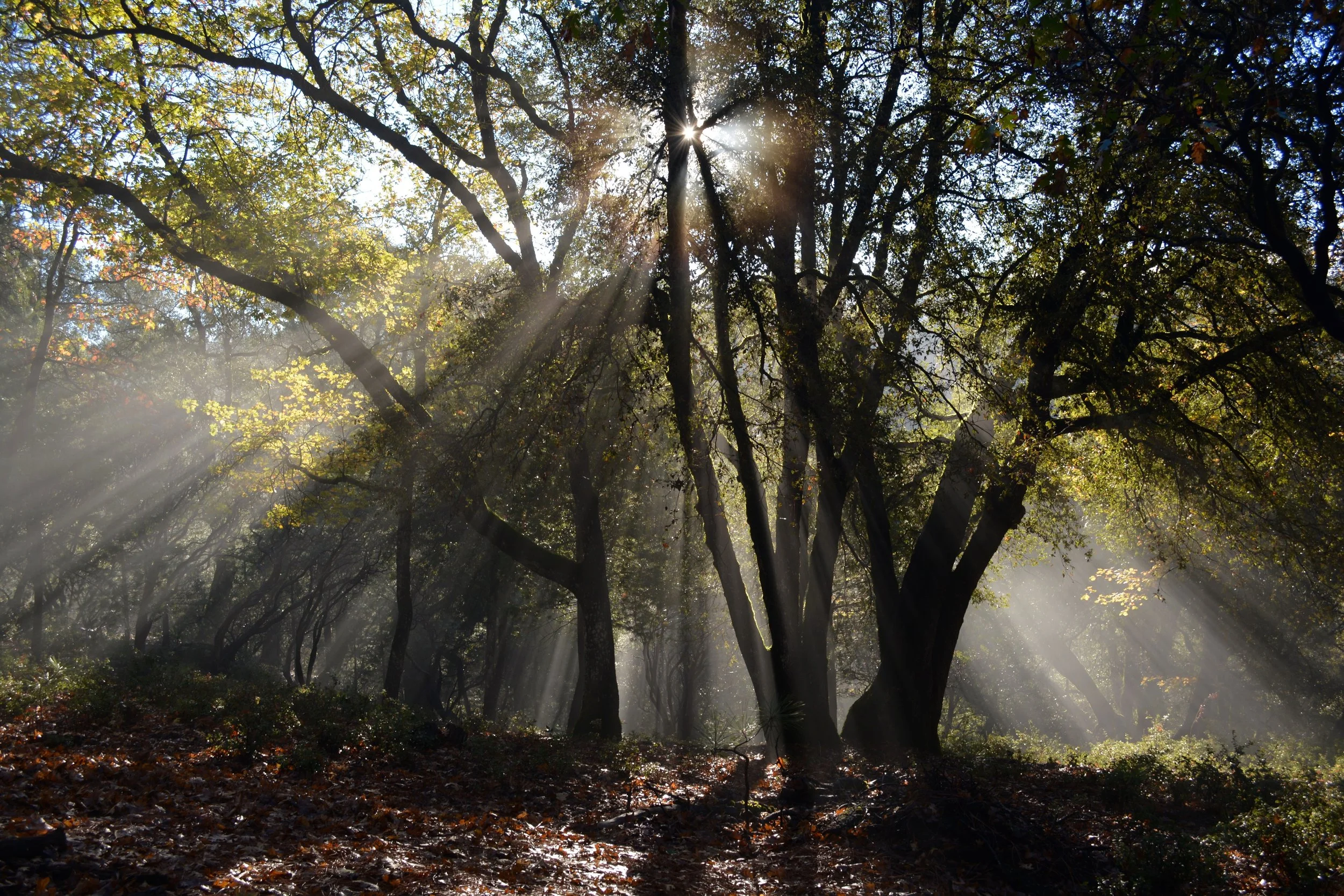
What is Forest Therapy?
Photo by Nathan Ansell on Unsplash
Forest Therapy is a research-based framework for supporting healing and wellness–for both people and the Earth – through immersion in forests and other natural environments.
The premise of Forest Therapy is not new, as indigenous peoples around the world will tell you (see Indigenous Acknowledgment here), but as humans have become more connected to their electronic devices and indoor spaces, there is increasing need for an intentional practice to help humans (re)connect to the natural world. One of the first modern practices of forest therapy, Shinrin-yoku, started in Japan in the 1980s, in response to Japan’s drastic increase in stress-related illnesses that occurred in conjunction with the economy’s tech boom. Shinrin-yoku translates to “forest bathing” or taking the forest in through your senses. The physiological benefits of forest bathing have been extensively studied (see National Library of Medicine article here), and many media articles, like those in Time Magazine and National Geographic give great insights into the practice.
Different versions of forest bathing going by varying names have been developed in recent years, with a similar premise of connecting to the natural world for wellness. I was trained in the method developed by the Association for Nature and Forest Therapy, which is inspired by and has many similarities to Shinrin-yoku, but was developed in the context of American culture. One distinction of the ANFT method of forest therapy is that it puts great emphasis on developing a reciprocal, feelings-centered relationship with the natural world. This quote from Native American ecologist and author Robin Wall Kimmerer sums up this aspect of the practice beautifully for me:
“Knowing that you love the earth changes you, activates you to defend and protect and celebrate. But when you feel that the earth loves you in return, that feeling transforms the relationship from a one-way street into a sacred bond.”
The practice I guide follows a clearly defined sequence of invitations designed to help people slow down and experience the natural world through their senses—not their thinking brains. A lot of it comes down to simply paying attention to what we notice in the natural world, which when we remember also includes ourselves and all of humankind. It’s hard to resist quoting Robin Wall Kimmerer again here:
"Paying attention is a form of reciprocity with the living world.”
The practice is simple but not always easy. It can be difficult to slow down and really notice what’s happening around us (and in us). The good thing is — there is no right or wrong way to do it (besides keeping yourself and others safe). Many of us like to think that the forest, or the natural world, will provide what each of us needs most in that moment if we can immerse ourselves into the experience. As ANFT founder Amos Clifford says:
“The forest is the therapist; the guide opens the doors.”
The practice I guide is not prescriptive; it’s different for everyone, and there are no expectations for what participants should experience. As your guide, I offer invitations for you to spend time in silence, reconnecting with your senses and your innate creative potential to make the experience one that suits YOU. As a guide, I strive to hold space for every type of experience, as well as every type of person.
Simply by slowing down and spending time in nature, we can experience a host of physiological benefits, including increased immunity, decreased stress, improved mood, improved attention span, and more. But these are just glimmerings of the potential benefits.
Another component of the practice is the part where we share what we are noticing. These sharing opportunities, like all elements of the practice, are invitational; you can opt out or participate in any way that feels right to you — by holding silence, speaking in any language, or in any other way that feels good to you. As your guide, I facilitate this element to allow the sharer to be witnessed with non-judgement in their experience, and the listeners to practice deep listening—not to respond, but with the intention to simply witness with curiosity and non-judgement or compassion.
Forest Therapy is a gentle practice — it’s not physically strenuous, and is designed for people of various abilities and physical conditions. While they are often called Forest Therapy “walks”, they aren’t long or fast walks; they are guided at a very slow pace, designed to help us calm our nervous systems and notice more of our inner and outer landscapes.
“The forest is the therapist; the guide opens the doors.”
Amos Clifford, founder of ANFT


